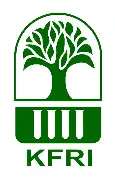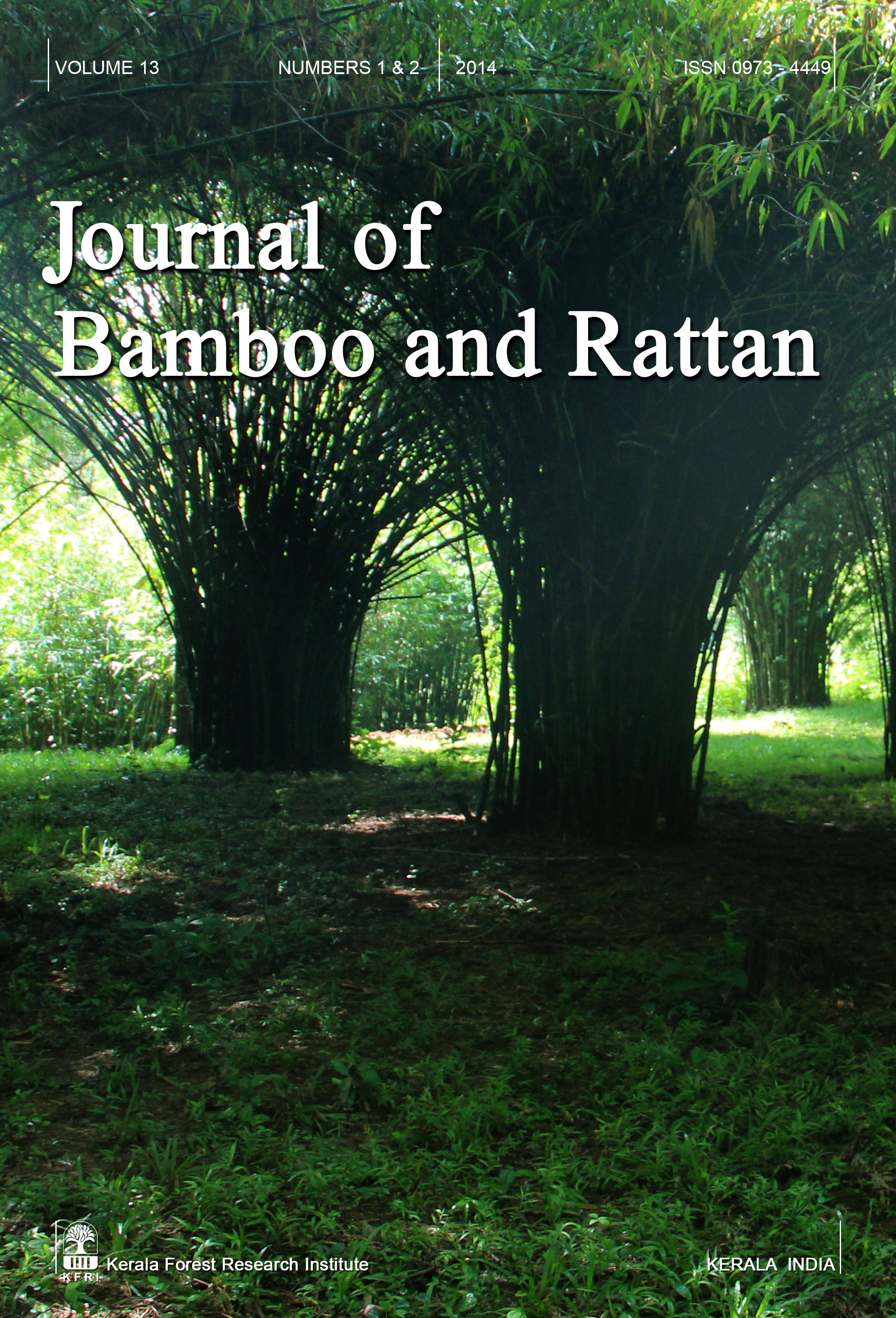Species diversity and abundance of rattan in offshore hill reserve forest of peninsular Malaysia along the elevation gradient
DOI:
https://doi.org/10.55899/Keywords:
Elevation, Penang Hill Reserve, dominance, evenness, richnessAbstract
Elevation act as determinant of variation in species diversity, especially for the rattan palms which have become one of the most important non-wood forest produce. This study examines the species abundance, composition and species diversity of rattan along an altitudinal gradient in the offshore Penang Hill Reserve Forest of peninsular Malaysia. A total number of 1721 individuals under 10 species representing 4 genera of rattan were recorded in Penang Hill Reserve. High elevation recorded the highest abundance of individuals (966) comprising all ten species with the highest Margalef index value (R1= 1.309) and least evenness (e^H/S=0.4919). High diversity of rattan species (value of Shannon, H'=1.749), greater species evenness (e^H/S=0.7184) and the highest Menhinicks index value (R2= 0.3694) was observed in middle elevation. Low elevation recorded the lowest species richness (R1=0.5304, R2= 0.2365) but the highest dominance value (D=0.4306). Anthropogenic disturbances hamper the habitat of rattan in the lower elevation, near the periphery of this reserve on a continuous basis.
References
Hinsui, J., Ignatius, B., Kronseder, K., Kärkkäinen, J., Pingoud, P. and Sandra, E. 2008. Non timber forest products in northern Thailand. University of Helsinki, Finland. 41p.
Bacilieri, R. and Appanah, S. 1999. Rattan Cultivation: Achievements, Problems and Prospects. CIRAD- Malaysia 1992–1995.
Ban, N.K., Regalado, J., Hung, N.P., Dung, N.Q., Binh, B.M. and Anh, T.P. 2005.
Rattan resource of Bach Ma National Park , Thua Thien Hue province. Agr. Rev. 8(14):1–6.
Belcher, B.M. 1999. The Bamboo and Rattan Sectors in Asia: an Analysis of Production-to-Consumption Systems. Working Paper No. 22, International Network for Bamboo and Rattan, India. 89p.
Buih, M.B. 2009. Rattans of Vietnam: Ecology, demography and harvesting. Utrecht University Press, Netherlands. 194p.
Dransfield, J. 1979. A manual of the rattans of the Malay Peninsula. Malayan Forest Records. Ministry of Primary Industries, Malaysia. 277p.
Dransfield, J. and Manokaran, N. 1994. Plant Resources of South-East Asia no 6. Rattans. PROSEA Foundation, Indonesia. 137p.
Dransfield, J. and Sunderland, T. 2002. Species Profiles Rattans: Current research issues and prospects for conservation and sustainable development, Expert Consultation on Rattan Development. Non-Wood Forest Prod. 14:23-34.
FAO. 2009. Thailand forestry outlook study. Bangkok, Thailand. 106p.
Fischer, A., Blaschke, M. and Bässler, C. 2011. Altitudinal gradients in biodiversity research: the state of the art and future perspectives under climate change aspects. Waldökologie, Landschaftsforschung und Naturschutz, 11:35–47.
Gentry, A. 1991. The distribution and evolution of climbing plants. In: F.E. Putz and H.A. Mooney (Eds.). The Biology of Vines. Cambridge University Press, UK. 3–49.
Hamid, N.H.A. and Suratman, M.N. 2010. Assessment of Rattan Abundance and Species Composition at Kuala Keniam, Taman Negara Pahang. In: Paper presented at International Conference on Science and Social Research, Kuala Lumpur, Malaysia. 1041–1046.
Hourt, K.E. 2008. A Field Guide of The Rattans of Cambodia. In: M. Chris and H. Greenwood (Eds.). WWF Greater Mekong. Cambodia. 1–74.
Isango, J. and Varmola, M. 2007. Stand structure and tree species composition of Tanzania miombo woodlands: a case study from miombo woodlands of community-based forest management. Work. P. Finnish Forest Res. Inst. 50 (2):43–56.
Kessler, M. 2009. The impact of population processes on patterns of species richness: Lessons from elevational gradients. Basic Appl. Ecol. 10: 295-299.
Ludwig, J.A. and Reynolds, J.F. 1988. Statistical ecology. A Primer on Methods and computing. John Wiley & Sons, New York. 337p.
Masykur, M. 2005. Community differences and plant composition by height in tropical rainforest Gunung Kinabalu Sabah. Master's Thesis, Universiti Sains Malaysia. 251p
McCain, C.M. 2009. Global analysis of bird elevational diversity. Global Ecol. Biogeogr. 18: 346–360.
McGill, B.J., Etienne, R.S., Gray, J.S., Alonso, D., Anderson, M.J., Benecha, H.K. and White, E.P. 2007. Species abundance distributions: moving beyond single prediction theories to integration within an ecological framework. Ecol. Lett. 10(10): 995–1015.
Meitram, B. and Sharma, G.J. 2005. Rattan resources of Manipur : species diversity and and reproductive biology of elite species. J. Bamboo Rattan 4(4): 399–419.
Noor, N.S., Hamzah, K.A. and Mohd, W.R. 1999. Considerations in Rattan Inventory Practices in the Tropics. Malaysia. Forest Research Institute, Malaysia. 1–56.
Pantanella, E. 2005. The Silvicultural and Sustainable Management of Rattan Production Systems. Master's Thesis, Tuscia University and FAO.
Powling, A. 2004. Rattans : taxonomy and ecology. LIPI report, Indonesia. 4p.
Rahbek, C. 2005. The role of spatial scale and the perception of large-scale species richness patterns. Ecol. Lett. 8: 224–239.
Rawat, D. 2011. Elevational reduction of plant species diversity in high altitudes of Garhwal Himalaya, India. Current Sci. 100:833–836.
Ros-Tonen, M.A. 2000. The role of non-timber forest products in sustainable tropical forest management. Holz als Roh-und Werkstoff 58(3):196-201.
Siebert, S.F. 2005. The abundance and distribution of rattan over an elevation gradient in Sulawesi , Indonesia. Forest Ecol. Manag. 210(3): 143–158.
Stiegel, S., Kessler, M., Getto, D., Thonhofer, J. and Siebert, S.F. 2011. Elevational patterns of species richness and density of rattan palms (Arecaceae: Calamoideae) in Central Sulawesi, Indonesia. Biodivers. Conserv.
20(9):1987–2005.
Sunderland, T.C.H. 2001. Rattan resources and use in West and Central Africa. http://www.fao.org/docrep/003/x9923e/x9923e08.htm.
Sundqvist, M.K., Giesler, R., Graae, B.J., Wallander, H., Fogelberg, E. and Wardle, D.A. 2011. Interactive effects of vegetation type and elevation on aboveground and belowground properties in a subarctic tundra. Oikos 120(1):1
Sastry C. 2002. Rattan in the twenty-first century: an outlook. In: F. Dransfield, F. Tesoro and N. Manokaran (Eds.). Rattan: Current Research Issues and Prospects for Conservation and Sustainable Development. FAO, Rome. 237–244.
Watanabe, N. and Suzuki, E. 2008. Species diversity, abundance, and vertical size structure of rattans in Borneo and Java. Biodivers. Conserv. 17: 523–538.
Weidelt, H. 1996. Rattan–distribution, morphology, use and ecologically well adapted cultivation. In: A. Schulte and D. Schöne (Eds.). Dipterocarp Forest Ecosystems- Towards Sustainable Management. World Scientific, Germany. 627–647.
Zhang, J. and Zhang, F. 2007. Diversity and composition of plant functional groups in mountain forests of the Lishan Nature Reserve , North China. Bot. Stud. 48: 339–348
Downloads
Published
Issue
Section
License
Copyright (c) 2025 Journal of Bamboo and Rattan

This work is licensed under a Creative Commons Attribution-NonCommercial-ShareAlike 4.0 International License.
How to Cite
Similar Articles
- S. K. Jha , D. Sharma, B. K. Tiwari , Status and distribution of forest-based artisans in Assam, India , Journal of Bamboo and Rattan: Vol. 13 (2014): Issue 1 & 2
- Rebecca Daimari, Pungbili Islary, Sanjeeva Nayaka, Vishal Kumar, Siljo Joseph, Dalip Kumar Upreti, Phyllopsora pyxinoides, a new record of lichenized fungi to India and 29 others new to Assam , Journal of Bamboo and Rattan: Vol. 24 (2025): Issue 1
- Musyarofah Zuhri, Zaenal Mutaqien, Invasiveness of Chimonobambusa quadrangularis (Francheschi) Makino in a remnant secondary forest of Cibodas Botanic Gardens, Indonesia and its proposed management , Journal of Bamboo and Rattan: Vol. 23 (2024): Issue 1
- Pranay Bantawa, Ritu Rai, A preliminary report on the flowering patterns and morphological characteristics of Bambusa tulda Roxb. (Poaceae: Bambusoideae): in Kalimpong district of West Bengal, India , Journal of Bamboo and Rattan: Vol. 24 (2025): Issue 1
You may also start an advanced similarity search for this article.

